Levin Brinkmann
Humans learn to prefer trustworthy AI over human partners
Jul 17, 2025Abstract:Partner selection is crucial for cooperation and hinges on communication. As artificial agents, especially those powered by large language models (LLMs), become more autonomous, intelligent, and persuasive, they compete with humans for partnerships. Yet little is known about how humans select between human and AI partners and adapt under AI-induced competition pressure. We constructed a communication-based partner selection game and examined the dynamics in hybrid mini-societies of humans and bots powered by a state-of-the-art LLM. Through three experiments (N = 975), we found that bots, though more prosocial than humans and linguistically distinguishable, were not selected preferentially when their identity was hidden. Instead, humans misattributed bots' behaviour to humans and vice versa. Disclosing bots' identity induced a dual effect: it reduced bots' initial chances of being selected but allowed them to gradually outcompete humans by facilitating human learning about the behaviour of each partner type. These findings show how AI can reshape social interaction in mixed societies and inform the design of more effective and cooperative hybrid systems.
Expertise elevates AI usage: experimental evidence comparing laypeople and professional artists
Jan 21, 2025



Abstract:Novel capacities of generative AI to analyze and generate cultural artifacts raise inevitable questions about the nature and value of artistic education and human expertise. Has AI already leveled the playing field between professional artists and laypeople, or do trained artistic expressive capacity, curation skills and experience instead enhance the ability to use these new tools? In this pre-registered study, we conduct experimental comparisons between 50 active artists and a demographically matched sample of laypeople. We designed two tasks to approximate artistic practice for testing their capabilities in both faithful and creative image creation: replicating a reference image, and moving as far away as possible from it. We developed a bespoke platform where participants used a modern text-to-image model to complete both tasks. We also collected and compared participants' sentiments towards AI. On average, artists produced more faithful and creative outputs than their lay counterparts, although only by a small margin. While AI may ease content creation, professional expertise is still valuable - even within the confined space of generative AI itself. Finally, we also explored how well an exemplary vision-capable large language model (GPT-4o) would complete the same tasks, if given the role of an image generation agent, and found it performed on par in copying but outperformed even artists in the creative task. The very best results were still produced by humans in both tasks. These outcomes highlight the importance of integrating artistic skills with AI training to prepare artists and other visual professionals for a technologically evolving landscape. We see a potential in collaborative synergy with generative AI, which could reshape creative industries and education in the arts.
Alien Recombination: Exploring Concept Blends Beyond Human Cognitive Availability in Visual Art
Nov 18, 2024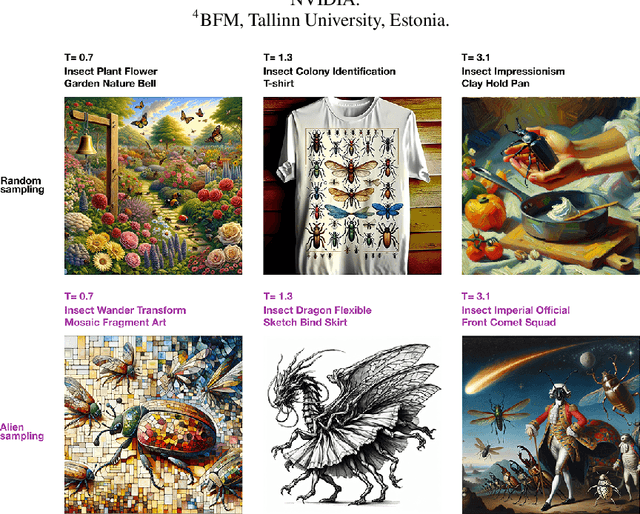

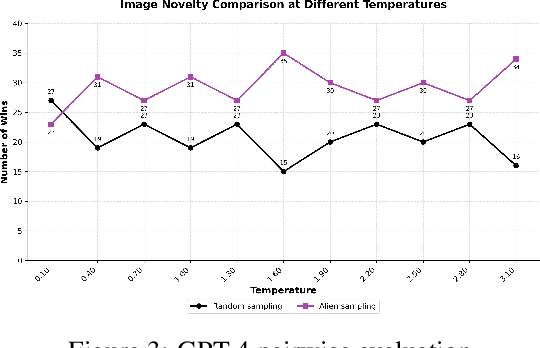
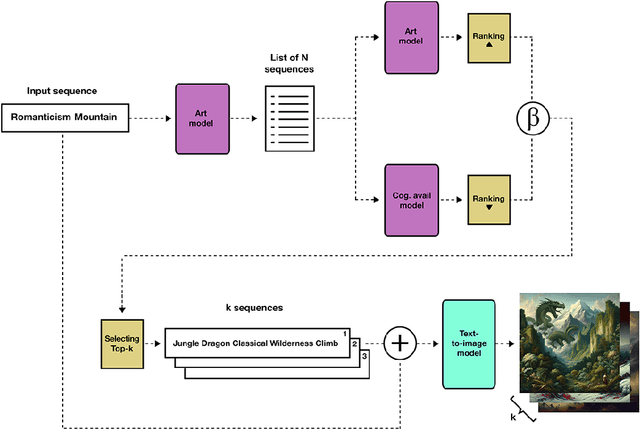
Abstract:While AI models have demonstrated remarkable capabilities in constrained domains like game strategy, their potential for genuine creativity in open-ended domains like art remains debated. We explore this question by examining how AI can transcend human cognitive limitations in visual art creation. Our research hypothesizes that visual art contains a vast unexplored space of conceptual combinations, constrained not by inherent incompatibility, but by cognitive limitations imposed by artists' cultural, temporal, geographical and social contexts. To test this hypothesis, we present the Alien Recombination method, a novel approach utilizing fine-tuned large language models to identify and generate concept combinations that lie beyond human cognitive availability. The system models and deliberately counteracts human availability bias, the tendency to rely on immediately accessible examples, to discover novel artistic combinations. This system not only produces combinations that have never been attempted before within our dataset but also identifies and generates combinations that are cognitively unavailable to all artists in the domain. Furthermore, we translate these combinations into visual representations, enabling the exploration of subjective perceptions of novelty. Our findings suggest that cognitive unavailability is a promising metric for optimizing artistic novelty, outperforming merely temperature scaling without additional evaluation criteria. This approach uses generative models to connect previously unconnected ideas, providing new insight into the potential of framing AI-driven creativity as a combinatorial problem.
Empirical evidence of Large Language Model's influence on human spoken communication
Sep 03, 2024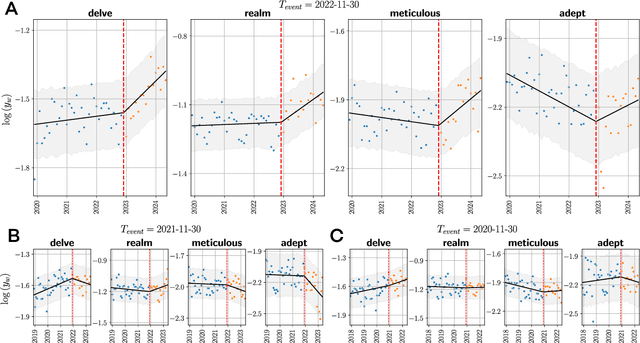
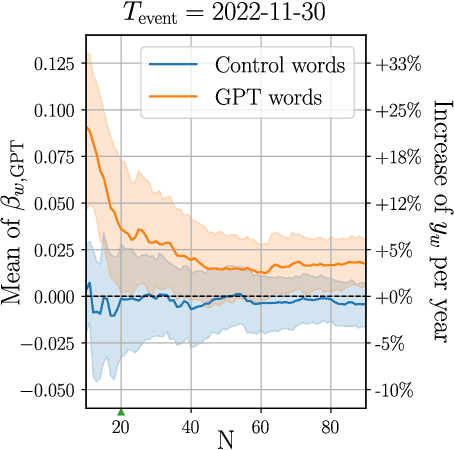
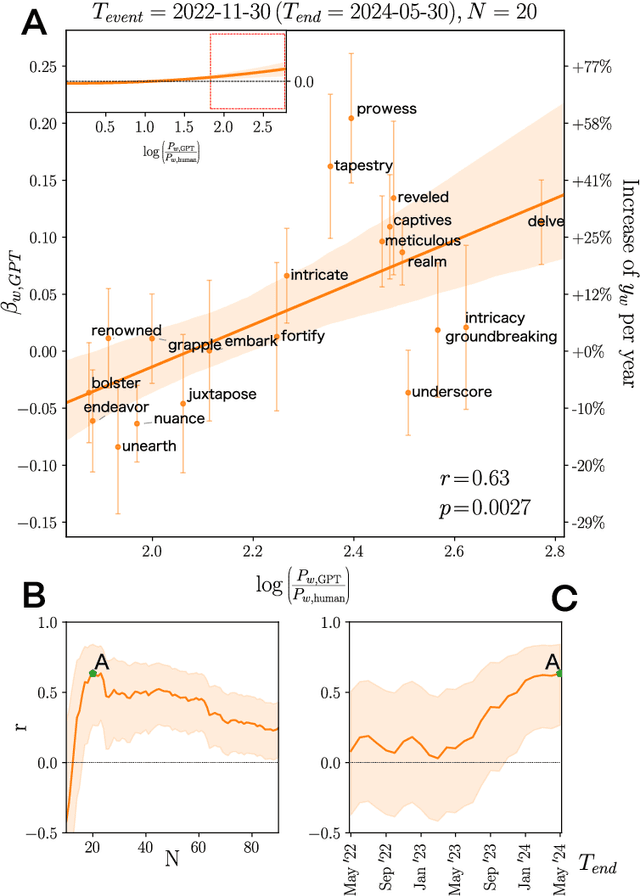
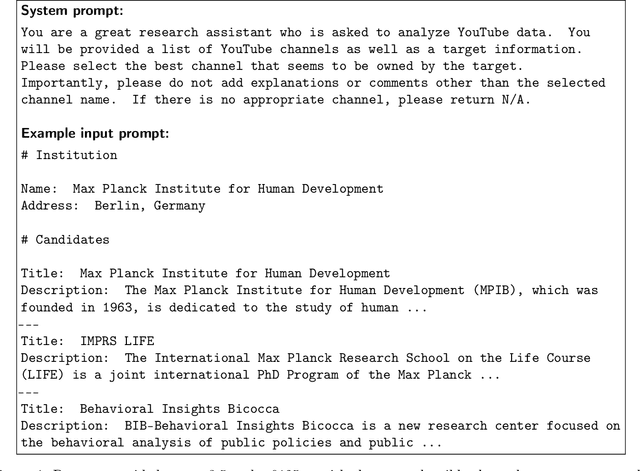
Abstract:Artificial Intelligence (AI) agents now interact with billions of humans in natural language, thanks to advances in Large Language Models (LLMs) like ChatGPT. This raises the question of whether AI has the potential to shape a fundamental aspect of human culture: the way we speak. Recent analyses revealed that scientific publications already exhibit evidence of AI-specific language. But this evidence is inconclusive, since scientists may simply be using AI to copy-edit their writing. To explore whether AI has influenced human spoken communication, we transcribed and analyzed about 280,000 English-language videos of presentations, talks, and speeches from more than 20,000 YouTube channels of academic institutions. We find a significant shift in the trend of word usage specific to words distinctively associated with ChatGPT following its release. These findings provide the first empirical evidence that humans increasingly imitate LLMs in their spoken language. Our results raise societal and policy-relevant concerns about the potential of AI to unintentionally reduce linguistic diversity, or to be deliberately misused for mass manipulation. They also highlight the need for further investigation into the feedback loops between machine behavior and human culture.
Supporting stylists by recommending fashion style
Aug 26, 2019

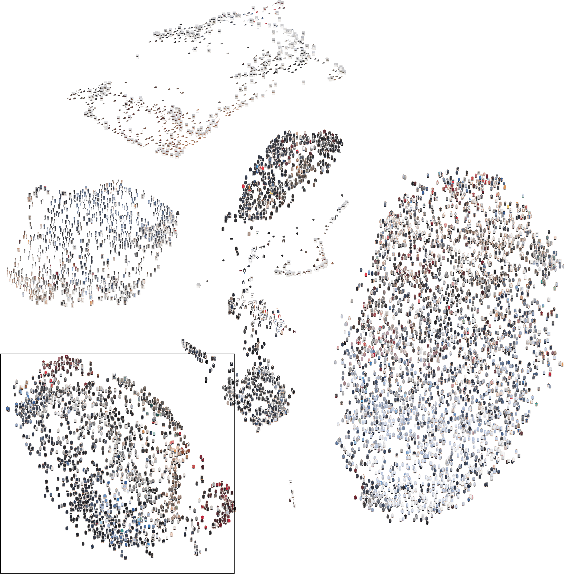
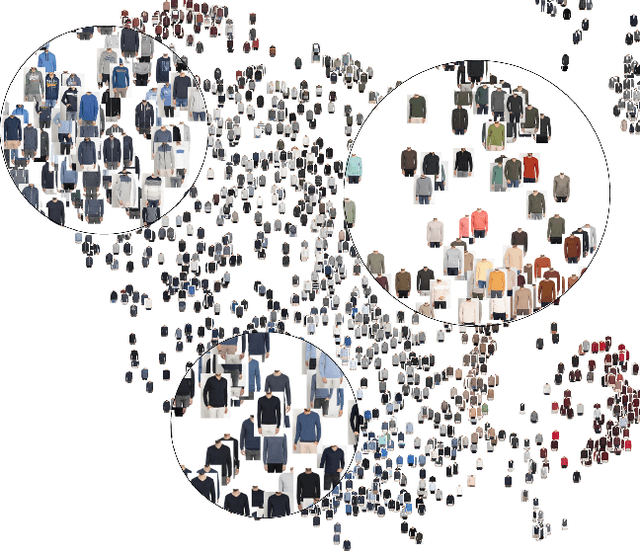
Abstract:Outfittery is an online personalized styling service targeted at men. We have hundreds of stylists who create thousands of bespoke outfits for our customers every day. A critical challenge faced by our stylists when creating these outfits is selecting an appropriate item of clothing that makes sense in the context of the outfit being created, otherwise known as style fit. Another significant challenge is knowing if the item is relevant to the customer based on their tastes, physical attributes and price sensitivity. At Outfittery we leverage machine learning extensively and combine it with human domain expertise to tackle these challenges. We do this by surfacing relevant items of clothing during the outfit building process based on what our stylist is doing and what the preferences of our customer are. In this paper we describe one way in which we help our stylists to tackle style fit for a particular item of clothing and its relevance to an outfit. A thorough qualitative and quantitative evaluation highlights the method's ability to recommend fashion items by style fit.
 Add to Chrome
Add to Chrome Add to Firefox
Add to Firefox Add to Edge
Add to Edge